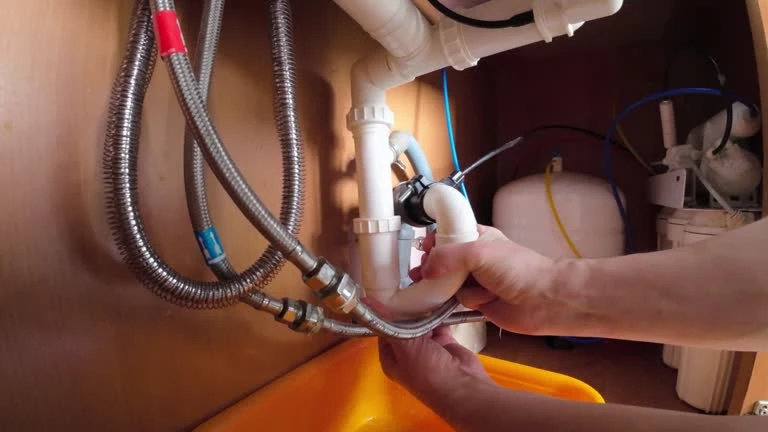Conceal valves are key to modern plumbing systems. They regulate water flow and pressure while remaining hidden. These valves are perfect for those who want a clean, minimalist design in their spaces. This article explores the importance, types, installation methods, and maintenance of concealed valves.
Understanding Conceal Valves
Conceal valves work like traditional valves, but they stay hidden behind walls or cabinetry. They control water flow and pressure for fixtures like showers and sinks. The key difference is that they do not take up visible space, maintaining a neat and sleek design. Conceal valves help you keep spaces clean while ensuring water systems function smoothly.
Types of Conceal Valves
There are several types of concealed valves. The most common are concealed shower valves, stop valves, and diverter valves. Concealed shower valves control water flow and temperature in showers. Stop valves manage water supply to fixtures like sinks and bathtubs. Diverter valves control water flow between multiple outlets, like showerheads and hand showers. Choosing the right valve depends on the specific plumbing needs of your space.
Advantages of Conceal Valves
Conceal valves offer significant aesthetic benefits. They hide pipes and valves, creating a smooth, seamless look. This is especially valuable in bathrooms and kitchens. Concealed valves save space, which is crucial in small areas. Additionally, these valves protect plumbing from damage. With no exposed parts, they reduce the risk of leaks or damage from physical impact.
How Conceal Valves Work
Conceal valves operate just like traditional valves. They control water flow, temperature, and pressure through the plumbing system. When you turn the control handle or knob, the valve adjusts the flow accordingly. Although hidden, the valve allows you to adjust water settings quickly and easily. It uses mechanical components to ensure smooth operation, whether manually or with electric or pneumatic controls.
Installing Conceal Valves
Installation of conceal valves requires careful planning. First, create space inside the wall or cabinetry for the valve. Then, connect the plumbing to the valve’s inlet and outlet ports. Make sure the valve is securely mounted and accessible for future maintenance. Install the valve according to manufacturer guidelines to ensure it works properly. A professional plumber should handle the installation to avoid leaks or misalignment.
Maintaining Conceal Valves
Regular maintenance helps keep conceal valves functioning properly. Over time, sediment can build up inside, causing blockages or malfunctions. Inspect the valve for signs of wear, such as leaks or reduced water flow. Clean the valve and surrounding pipes to ensure smooth operation. It’s also important to check pressure settings regularly. Professional plumbers can perform deeper inspections and replace any worn-out parts.
Troubleshooting Conceal Valves
Troubleshooting conceal valves involves identifying common issues like leaks or slow water flow. A clogged valve might reduce water pressure or prevent proper flow. In this case, you can clean or flush the valve. If the valve leaks, check the seals and connections. Leaks can be harder to detect in concealed systems, so regular checks are crucial. If you encounter persistent problems, call a plumber to inspect and repair the valve.
Cost Considerations of Conceal Valves
Conceal valves tend to cost more than traditional exposed valves. The installation process is also more labor-intensive, which adds to the cost. However, these valves offer long-term benefits. Their sleek design improves the aesthetics of the space, and they can protect plumbing from damage. The efficiency improvements from controlling water pressure can also help lower utility bills over time. In the end, the benefits often justify the initial investment.
Conclusion
Conceal valves offer an elegant solution for modern plumbing systems. They regulate water flow, temperature, and pressure while remaining hidden to maintain a clean, organized space. With the right installation, maintenance, and troubleshooting, concealed valves improve both the functionality and appearance of plumbing systems. Their space-saving qualities and protection from damage make them a valuable addition to any home or business.
IFAN Products international standards
IFAN products strictly adhere to a comprehensive range of international standards, encompassing ISO 15874, EN 15874, ASTM F2389, DIN 8077/8078, GB/T 18742, NBR 15884, ISO 15494, EN ISO 15494, GB/T 19472, NBR 15494, ASTM 2846 (501), DIN 8079/8080 (502), ASTM F441/F441M SCH80 (503), DIN (504), DIN (505), GB/T 18993, AS/NZS 1477, CSA B137.6, NSF/ANSI 14, TIS 17-2532/1131-2535, BS 3505, BS 4346 (801), ASTM D1785 SCH40 (802), ASTM D1785 SCH80 (803), DIN (804), GB (805), GB (806), GB(901), DWV(902), ASTM D2665 (903), along with ASTM D2241, D2665, D2729, and F441/F441M series, ISO 1452, EN ISO 1452, DIN 8061/8062, GB/T 10002, AS/NZS 1477, JIS K6741, CSA B137.3, and other national and industry norms.
Connect
IFAN is a Chinese manufacturer of plastic pipes, fittings and valves with 30 years of experience. If you are interest in IFAN copper fittings, copper valves, plastic pipes and fittings, please contact us. IFAN offers you a variety of standard pipes to meet your specific needs. Click below to learn more about IFAN’s wide range of affordable and cost-effective valve products and piping system related products.
We will reply your email or fax within 24 hours.
You can call us at any time if there is any question on our production.
For more information,pls visit our webside https://waterpipefitting.com/
Pls Mailto: [email protected]
Whatsapp: +8615088288323














Recent Comments